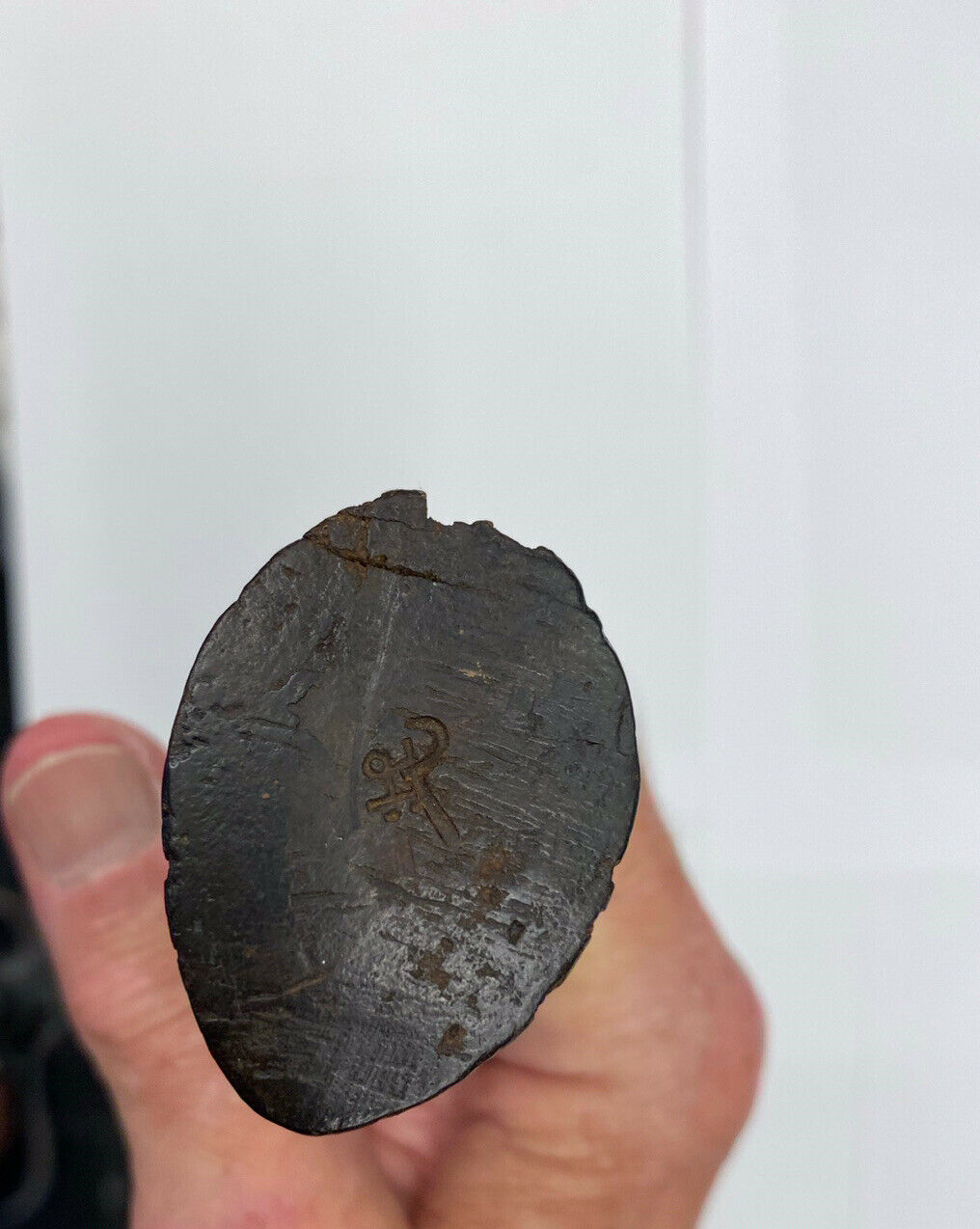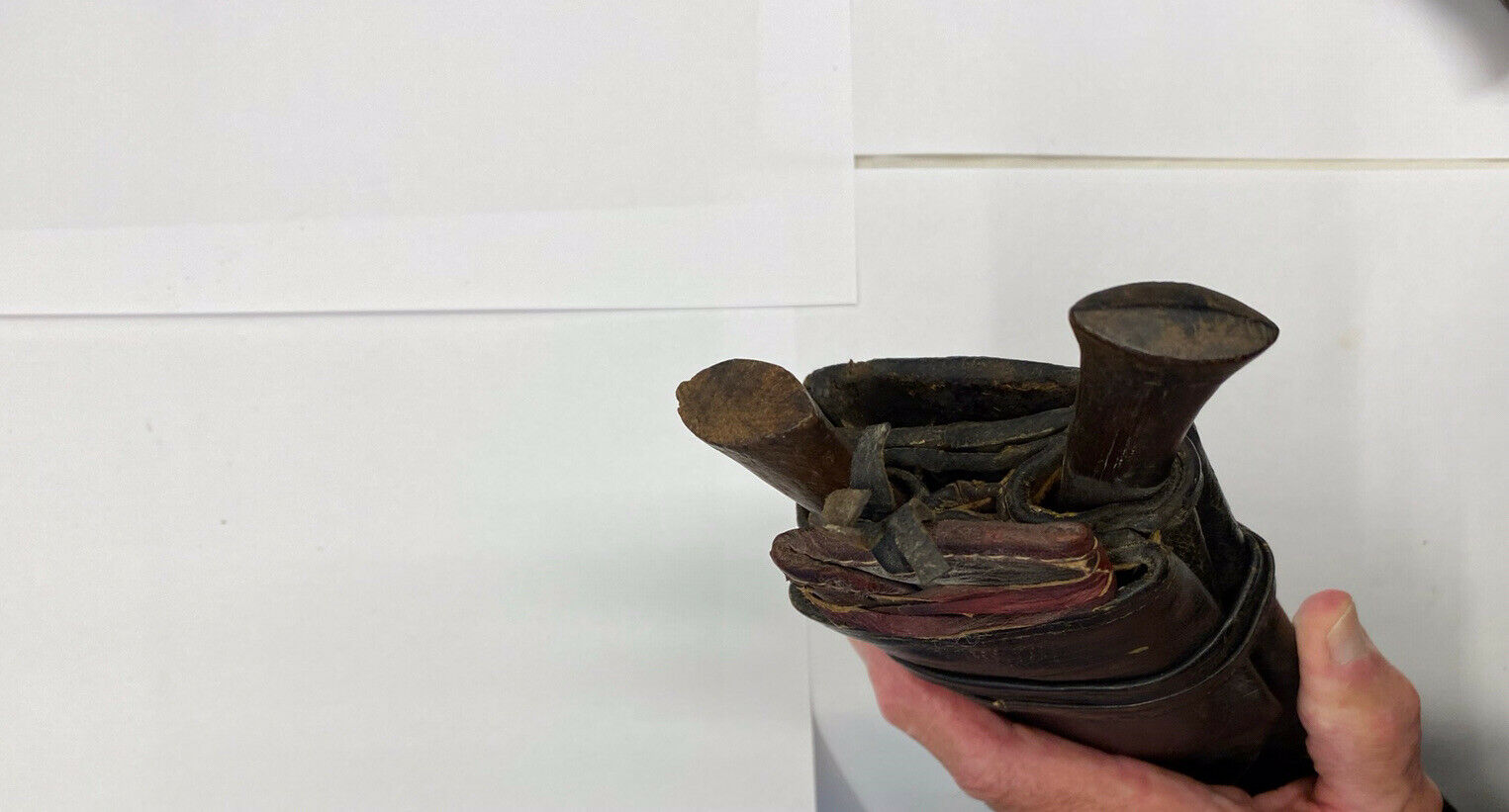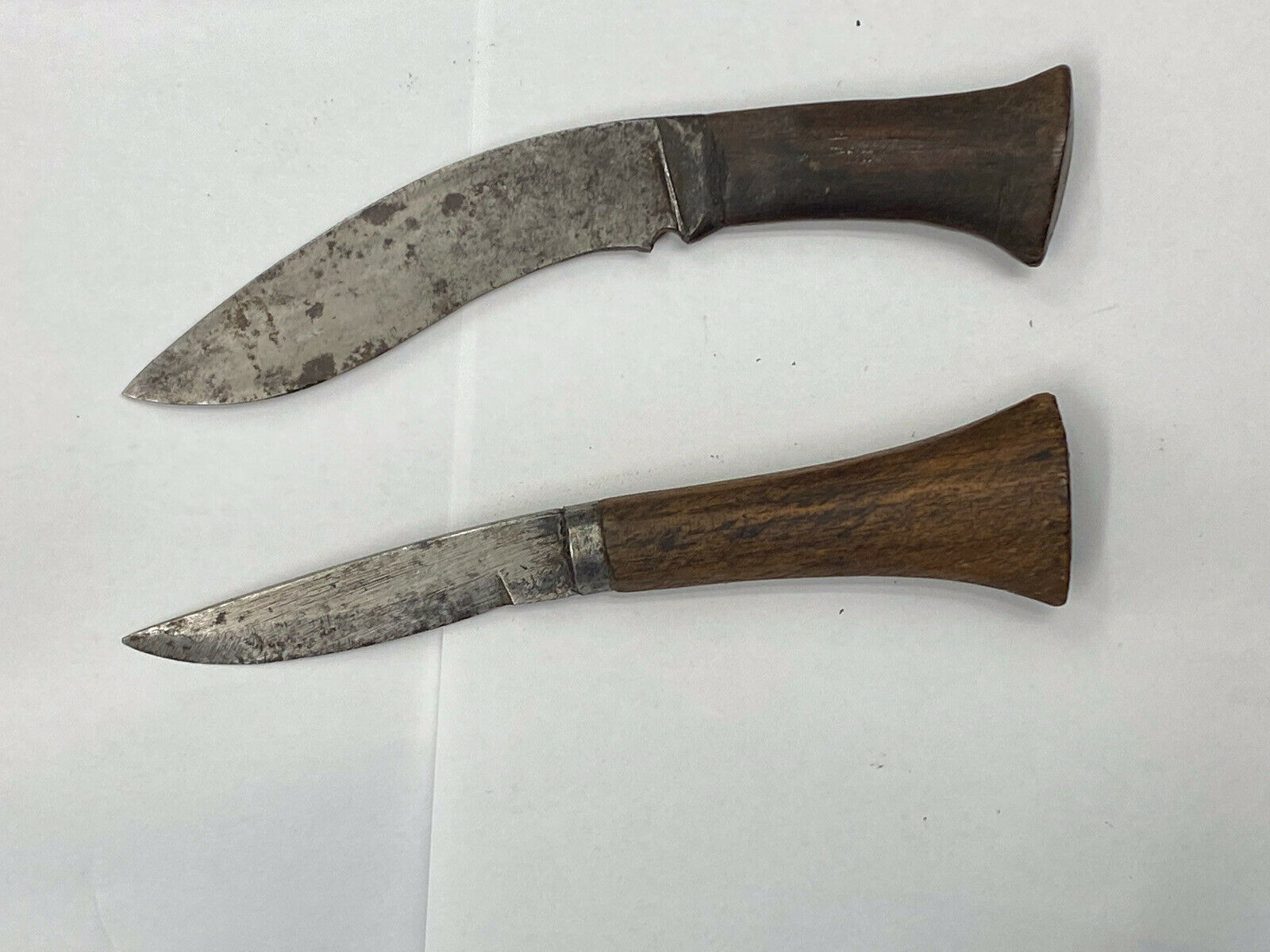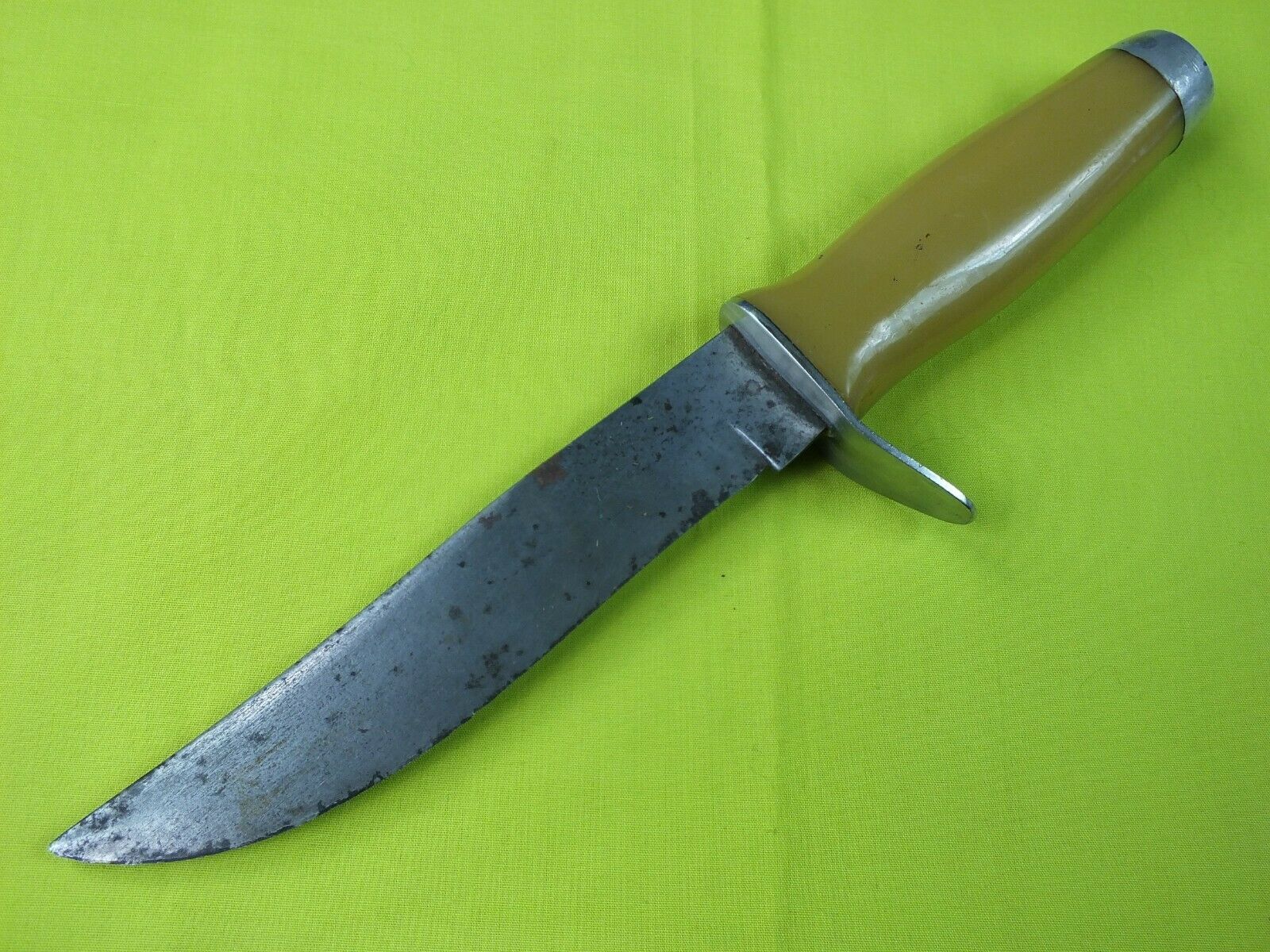-40%
Kukri 1850-1910 original scabbard, karda, chakmak and goji
$ 41.71
- Description
- Size Guide
Description
Kukri 1850-1910 original scabbard, karda, chakmak and goji.This is an older Nepali Kukri probably dating between 1850- 1910, judging by its features. The fact that it has all its accompanying tools and scabbard is amazing.
The blade is hand forged from two pieces of carbon steel, the faint seam is visible along the spine. Later blades were often made from vehicle springs. It is 13 1/2 in. long measured along the spine from the bolster to the tip, and 2 1/2 in. wide at it’s widest point. At the base of the edge side of the blade is the “cho”, function or symbol is unknown to me. Lots of stories as to what it represents.
He handle is a single piece of hard wood driven on or burned on to the tang down to the steel bolster. It is obviously hand carved, but appears unfinished, check the unfinished carved notches encircling it. The central circumferential ridge nestles in the palm insuring a solid grip. The flared butt is lacking a pommel, as the older Kukri’s do, and allows the edge of the hand purchase when drawing it from the sheath.
The small knife, the “Karda” is a basic utility knife, the other tool, the “chakmak” is a combination hone for sharpening the main blade and a striker for the flint and tinder carried in the pouch or “goji”.
The ingenious leather work and stitching that allows the tools and goji to be attached to the scabbard is truly amazingly creative. The leather is dry but not cracking but needs care for future preservation. The tip of the scabbard is capped by the”chape”, which is secure and integral.
This sturdy knife was a multifunction tool in use by the indigenous people of Nepal, from clearing jungle brush, butchering meat, survival and of course combat. The latter facility was amply demonstrated in WW I and II




















